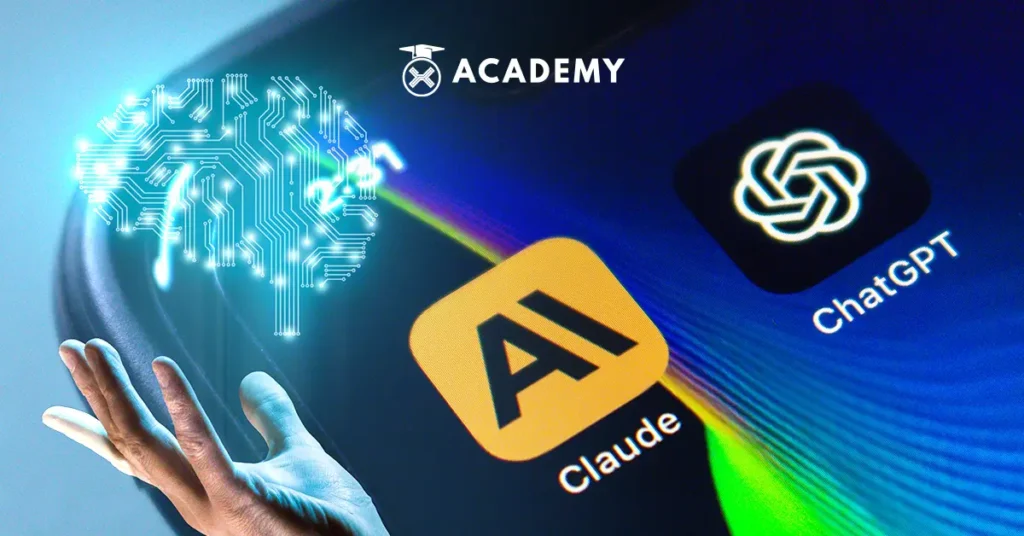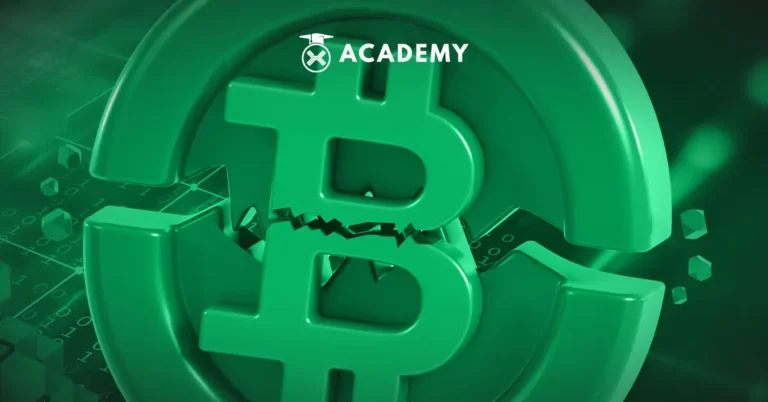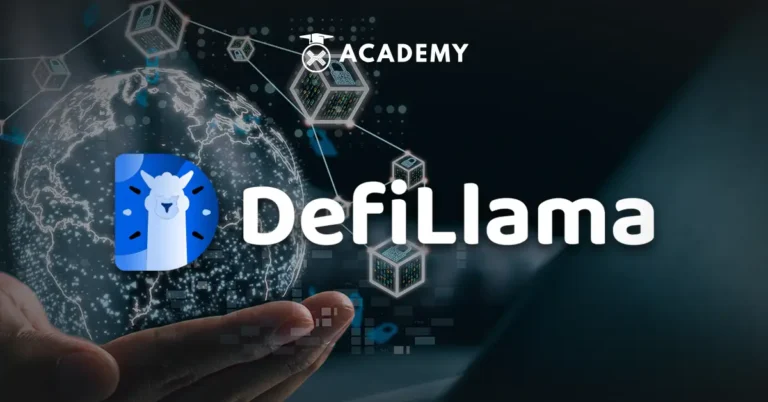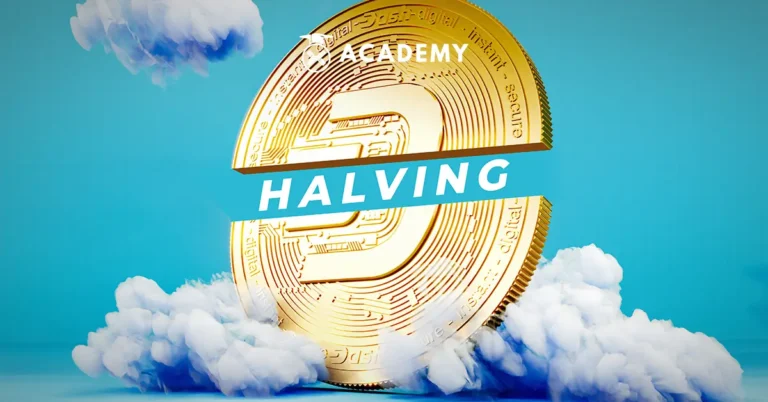In the rapid competition in the chatbot service sector, Claude AI is attracting attention. Many chatbot services are available, ranging from ChatGPT and Bing AI to Google’s Bard.
However, Claude AI itself is said to have a number of advantages over its competitors. To better understand Claude AI, how to use it, and how it compares to ChatGPT, check out the following review!
What is Claude AI?
Quoting pluralsight.com, Claude, developed by Anthropic AI, is an AI chatbot and the name for the Large Language Models (LLMs) that underlie and drive it.
Claude is trained to have natural text-based conversations and is excellent at summarizing, editing, questioning, decision-making, writing code, and more.
Currently, Anthropic offers three “Claude” models: Claude 1, Claude 2, and Claude-Instant. While they are all language-only models, each has differences in capabilities.
Claude is regularly trained with current information and can read up to 75,000 words. This means he can read short books and answer questions about them.
Anthropic AI and Security
Anthropic is an AI startup founded by former members of OpenAI, best known for its focus on AI ethics.
Among the founders are Amodei, Dario, and Daniela, who were integral to OpenAI’s GPT-3 project before parting ways due to concerns over AI safety, leading to Anthropic’s founding in 2021.
If OpenAI sounds familiar, it’s because of the company behind ChatGPT. GPT-3 was the predecessor to both ChatGPT and Claude.
In 2020, it was the world’s most advanced LLM – imagine ChatGPT, but less talkative and more like an adored auto-complete tool.
Amodei brought with them various researchers from OpenAI when they started Anthropic.
Now valued at $20 million, Anthropic is a public benefit company with substantial investments from tech giants like Google, most recently $4 million from Amazon.
Anthropic’s differentiator is AI safety. In contrast to OpenAI’s GPT-4, which has been trained based on human preferences (a less well-defined metric)
Anthropic introduced a goal-oriented approach to their Claude model called “constitutional AI.”
They have trained their AI to align with constitutional AI documents that outline principles such as freedom, opposition to inhumane treatment, and privacy. They promote this approach as unique, safe, and responsible.
How to Use Claude AI?
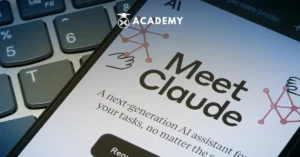
Quoting pluralsight.com, using Claude AI is quite easy. All you need to do is create an account or log in to the claude.ai website. You will see a feedback box welcoming you.
Type your question or message into the box. You can also upload a PDF or text document if you want Claude to read it for context.
After that, start the conversation. You can copy Claude’s answer, try your question again for a different answer, or provide feedback.
Claude vs ChatGPT: Model Comparison and Performance
Quoting pluralsight.com, Claude’s various offerings are in line with OpenAI’s language model offerings:
Claude-Instant is the cheaper and faster offering, similar to GPT-3.5, while Claude-2 is the newest but slower model, competing with GPT-4.
Claude has no access to external information other than that provided in their prompts, and Claude cannot interpret images or create drawings.
Can Claude AI Access the Internet?
Claude is unable to access the internet. While the OpenAI-Bing partnership has been the impetus for developing internet access for OpenAI’s GPT-4, Claude has not partnered with search engines similarly.
It remains to be seen if Claude will gain access to search functionality like ChatGPT, but for now, it seems unlikely.
Claude AI Price and Subscription Model
Quoting pluralsight.com, for the average user, Anthropic provides free access to their best Claude models through their chat interface at claude.ai, which is still in its open beta trial stage as of October 2023. Sign up for a free account.
They also offer Claude Pro for $20 monthly, a subscription analogous to ChatGPT+. The free tier of Claude AI gives users access to Anthropic’s latest and most capable model, Claude 2.
That contrasts OpenAI, which keeps GPT-4 behind the ChatGPT+ subscription. According to Anthropic’s website, Claude Pro offers:
- 5x more use of [Claude 2] than the free tier provides, with the ability to send many more messages
- Prioritized access to Claude.ai during high-traffic periods
- Early access to new features that help you get the most out of Claude
Anthropic sells access to their models to three groups: standard users (e.g., users of their chat interface). These developers want to integrate Claude into their applications and businesses that need enterprise-level support.
Developers who want to use Claude AI can access their models through the Anthropic API or Amazon Bedrock. Amazon and Anthropic support an on-demand approach, pricing based on the amount of text Claude wants to process for you.
The following table outlines the price per thousand “tokens,” which measures how much text goes into the model. A typical estimate is 750 words per 1,000 tokens.
Input and output tokens have different prices due to differences in computational costs. Includes a price comparison with OpenAI’s GPT models.
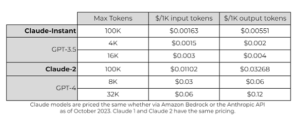
Image source: pluralsight.com
For business customers, AWS Bedrock also offers “Reserved Throughput,” which provides cloud computing capacity dedicated to your business.
This option is not cheap, but once you have the reserved computing capacity, you can send requests to it as needed for a flat fee of what you paid to reserve the cloud resources.
A one-month commitment is the minimum time you can reserve throughput with Amazon Bedrock, and with the Claude-Instant price point, that would cost $29,462.40. The following table outlines the price per hour of your reservation.

Image source: pluralsight.com
How to Gain Access to Claude AI
Quoting pluralsight.com, Claude AI, or Claude class models are available through various channels. The easiest way to access Claude is to create a free account at claude.ai to access the Anthropic chatbot interface.
The chat interface is great if you want to use Claude for your everyday needs. Basic experiments with prompt engineering can be done using the free tier, which gives access to Claude-2.0.
If you are a developer looking for API access to Claude, then you have two options as follows:
- Anthropic’s API is still in a closed beta phase, and to access it, an initial access request must be submitted; however, there is no information on what requests they approve or how long it takes to gain access.
- Amazon offers a full suite of Claude models through Amazon Bedrock. In general, on-demand and provisioned throughput is available, so there are no waiting lists or access requests.
Differences Between Claude vs. ChatGPT
Quoting tech.co, Claude is a robust and well-designed AI chatbot, and it’s a good alternative if ChatGPT is having issues.
However, some key differences between Claude and ChatGPT are important to know before you start using either of them, including:
1. Language Model
Claude is the name given to both the Chatbot and the large language model developed by Anthropic. The model was trained with over 137,000,000,000 text and code parameters – just like Meta’s Llama 2.
Parameters are different variables that an LLM learns during training, which can be adjusted to shape how the model replies to responses. In general, more parameters mean a more robust language model.
The free version of ChatGPT uses GPT-3.5, trained with 175,000,000,000 parameters – so not much bigger than Claude. GPT-4, which powers the paid version, is trained with a large set of 1,500,000,000,000 parameters.
2. Data Storage and Usage
Since ChatGPT appeared on the scene in 2022, privacy advocates have demanded more information about how the chatbot utilizes user data.
OpenAI has always been open about the fact that ChatGPT stores data, that user conversations might be used for AI training purposes, and that these could even be seen by humans working at the company.
However, the company will keep your conversations for up to 30 days after you delete them.
Claude from Anthropic will also keep your conversations. The company says they will “automatically delete input and output on the backend within 90 days of receipt or generation unless you and we agree otherwise”.
Not only that, but they won’t “use your conversations in consumer or beta services to train our models.” The only exception is if you are flagged for trust and security reviews.
3. Response Moderation
One of the big differences between ChatGPT and Claude is that Claude is generally considered better at generating consistently safe responses. The reason? Claude is built with something called Constitutional AI.
Claude is given a set of values that its answers should follow and can then adjust itself using the constitution rather than waiting for human feedback and input, which is how ChatGPT learns what responses it should reject.
Claude was asked to “critique and revise his responses using a set of principles and several examples of the process in one model training phase.”
In the second phase, reinforcement learning is used to train the model further, but as we have discussed, it generates feedback using the constitution.
4. Context Window Size
As mentioned above, Claude 2 has a context window of 100,000 tokens, or about 75,000 words – which means you could, in theory, upload large reports, legal documents, etc.
However, Claude 2.1 has a much larger context window of 200,000 tokens – about 150,000 words. This makes it a very attractive prospect for companies, as Claude can handle very large inputs and provide more accurate responses due to its context window.
GPT-3.5 Turbo has a context window of 4,097 tokens, while GPT-3.5-16K has a context window of about 16,385 tokens. GPT-4, available only to ChatGPT Plus subscribers, has a context window of over 32,000.
Pro account subscribers of AI chatbot competitor Perplexity can now also use Claude’s long context window of 100,000.
5. Company Revenue
The last big difference is the company’s revenue. Anthropic predicts it will generate at least $850 million annually by 2024. On the other hand, ChatGPT is approaching $1,000,000,000 in annual revenue.
More people use it, and now it has its premium version. However, this does not necessarily mean that either company is highly profitable. It costs around $700,000 daily to keep ChatGPT running and responding to user queries.
Is Claude Better than ChatGPT?

Quoting pluralsight.com, yes and no, Claude manages to outperform ChatGPT in some benchmarks while losing in others. Free Claude is better than free ChatGPT, but ChatGPT has a paid subscription, which is superior in terms of expanded knowledge and capabilities compared to Claude.
The tests and evaluations we use to measure AI intelligence can never be comprehensive, so the question of which benchmarks to rely on remains.
Simple, easy-to-understand leaderboards are helpful, and the LMSYS chatbot arena leaderboard is a favorite and rates models based on the following three evaluations:
1. Elo Rating
This is the same algorithm that scores chess players against each other. It is based on comparing human input to judge which response is best and, ultimately, which model is best.
2. MT-Bench
This is a benchmark that evaluates models using GPT-4. This benchmark is shown to have 80% accuracy against human evaluation and uses a multi-round question-answer session as the evaluated input/output pair.
3. MMLU (Massive Multitask Language Understanding)
This LLM evaluation approach helps quantify the knowledge captured during model training by evaluating answer questions at various depths of understanding/ability and across various topics.
Claude’s models all surpassed the free version of ChatGPT, or GPT-3.5, in both Elo and MMLU ratings, but GPT-4 excelled in terms of slower and more expensive tiers.
Raw knowledge aside, Claude excels at reading, analyzing, and summarizing long documents with a 150-page limit, enough to accommodate small books.
Claude Pro lacks many of the new features offered by ChatGPT+, namely voice chat, image generation, data analysis, image understanding, and web browsing.
Claude Pro’s offering has much to catch up on if it hopes to increase its market share at the same price as ChatGPT+.
Claude AI and Crypto Price Predictions
Quoting news.bitcoin.com, artificial intelligence company Anthropic recently introduced the second iteration of Claude, rivaling the likes of Google’s Bard and OpenAI’s Chatgpt 4.
Claude can handle substantial data, consuming nearly 75,000 words through Anthropic’s large language model.
Therefore, bitcoin.com put Claude to the test, providing it with the top 40 crypto assets by market capitalization, one-hour, 24-hour, and seven-day performance, and daily volume in a single query.
Before providing information to Claude, bitcoin.com provided a statement to the chatbot:
“I will to give you data on the top 40 crypto assets. I want you to act as a crypto expert and use all the historical data you know to predict the prices of all 40 cryptocurrencies until January 1, 2024. Do you understand?”
Claude confirmed his understanding, and bitcoin.com provided him with the aforementioned data. For the top 40 coins, Claude’s predictions are as follows:
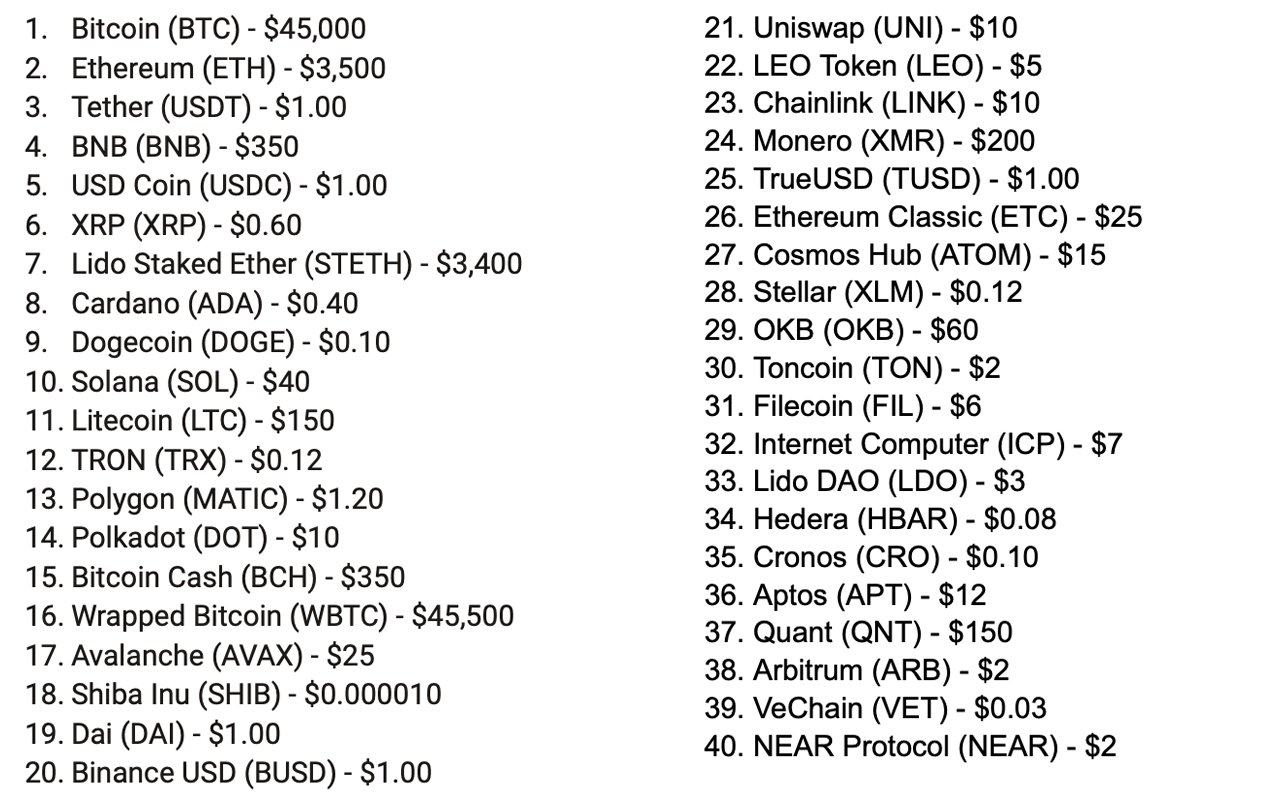
Source: bitcoin.com
Claude’s price predictions for the top 40 crypto assets are based on market capitalization until January 1, 2024. Claude mentioned that the AI’s predictions may not be accurate and that such predictions are “almost impossible.”
Conclusion
In conclusion, in evaluating the comparison between ChatGPT and Claude AI, both chatbots offer advantages and disadvantages that must be considered. ChatGPT, with support from OpenAI, has become one of the leading chatbots in the market.
Its strengths include wide access to users, free and subscription versions, and additional features, such as generating images and surfing the web.
However, its main drawbacks are the lack of control over the content generated and privacy concerns related to the use of user data.
Meanwhile, Claude AI, developed by Anthropic, offers advantages regarding safer and more reliable responses, especially since it is built using Constitutional AI.
Claude also offers a larger context window, allowing it to handle large-scale content input better. However, its downsides include more limited features in terms of multimedia capabilities and restricted access to premium models.
Readers need to consider their own needs and preferences when choosing a chatbot. If privacy and secure responses are preferred, Claude may be a better choice.
However, if broad access and additional features such as image creation are important, ChatGPT may be more suitable.
As a disclaimer, it is also important to remember that using AI technology, including chatbots, should be done wisely and appropriately, especially when predicting crypto markets.
We must be aware of potential risks, such as data privacy and security, and recognize that AI technology is imperfect and can have limitations in understanding context and presenting accurate information.
Therefore, when using ChatGPT or Claude AI, users should always consider and understand the limitations and potential risks associated with AI technology and maintain awareness of their data security and privacy.
After reading the article above, inform readers that you can also read articles about AI, starting from Perplexity AI and Humata AI, only on INDODAX Academy.
To add insight into blockchain technology, you are strongly advised to access the latest articles available on INDODAX Academy.
INDODAX Academy presents a variety of materials, both basic concepts and more in-depth aspects related to blockchain technology.
By reading the articles on INDODAX Academy, you will gain a deeper understanding of this technology, including how it is applied, and get the latest information about the crypto world.
So, let’s continue improving our understanding of blockchain and crypto assets with INDODAX Academy!




